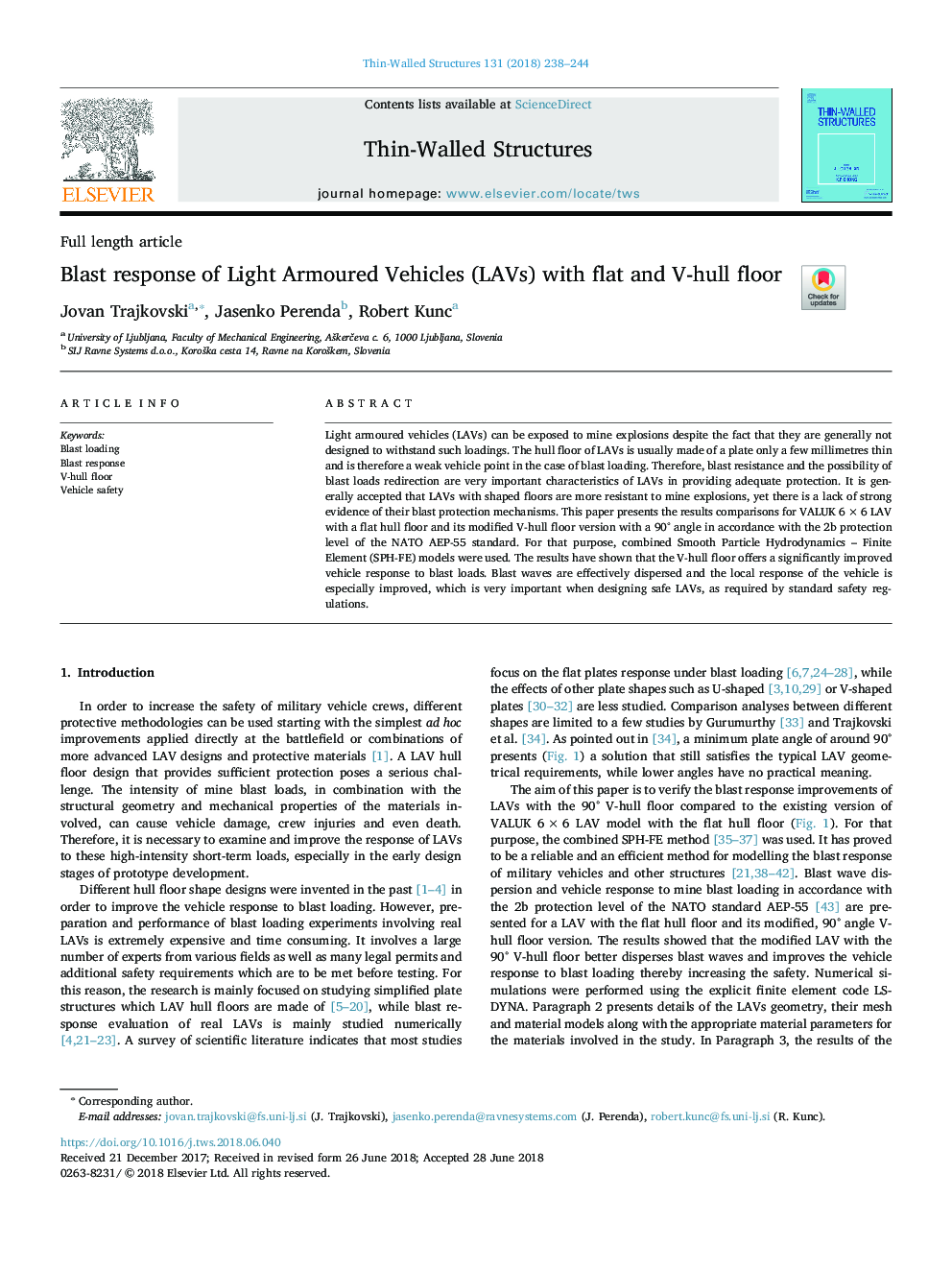| Article ID | Journal | Published Year | Pages | File Type |
|---|---|---|---|---|
| 6777126 | Thin-Walled Structures | 2018 | 7 Pages |
Abstract
Light armoured vehicles (LAVs) can be exposed to mine explosions despite the fact that they are generally not designed to withstand such loadings. The hull floor of LAVs is usually made of a plate only a few millimetres thin and is therefore a weak vehicle point in the case of blast loading. Therefore, blast resistance and the possibility of blast loads redirection are very important characteristics of LAVs in providing adequate protection. It is generally accepted that LAVs with shaped floors are more resistant to mine explosions, yet there is a lack of strong evidence of their blast protection mechanisms. This paper presents the results comparisons for VALUK 6â¯Ãâ¯6 LAV with a flat hull floor and its modified V-hull floor version with a 90° angle in accordance with the 2b protection level of the NATO AEP-55 standard. For that purpose, combined Smooth Particle Hydrodynamics - Finite Element (SPH-FE) models were used. The results have shown that the V-hull floor offers a significantly improved vehicle response to blast loads. Blast waves are effectively dispersed and the local response of the vehicle is especially improved, which is very important when designing safe LAVs, as required by standard safety regulations.
Related Topics
Physical Sciences and Engineering
Engineering
Civil and Structural Engineering
Authors
Jovan Trajkovski, Jasenko Perenda, Robert Kunc,
